My Island Paradise, part 2
Today's installment of photos are from "down the islands". Already small Trinidad has a tiny archipelago of even smaller islands of its north-west tip. These are a popular spot for holiday homes -- even when you already live away from most of it, there's still a temptation to get away from it all.
I spent a lot of my childhood down the islands, in an ancient colonial house with no running water and only a patchy supply of electricity. Since then electricity supplies have improved and mains water is even available on some of the islands, but the majority are still largely untouched.
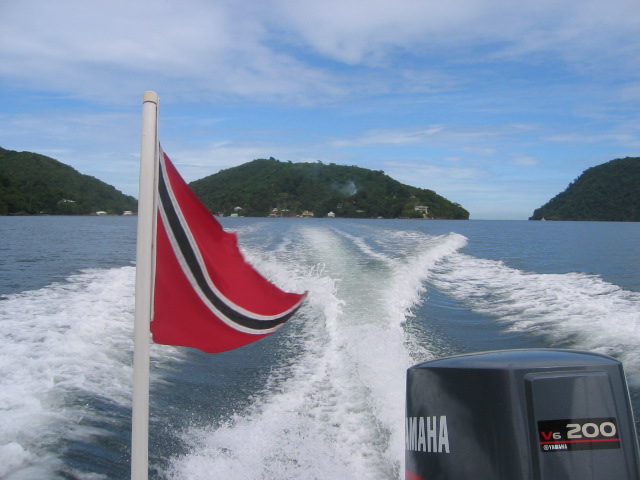
Our vehicle for the day was my dad's boat Sweet Lime, a power boat with an outboard motor and a distinctive Trinidadian flag. As you can see, the islands have a distinctive profile which you're going to see over and over. The island in the picture is Monos, where my parents share a house. Apart from the holiday homes at the waterline it is completely uninhabited. Monos and its sister islands Huevos and Platos have the distinction of having been named by Christopher Columbus himself as he passed through here in 1498, on his third voyage to the New World.
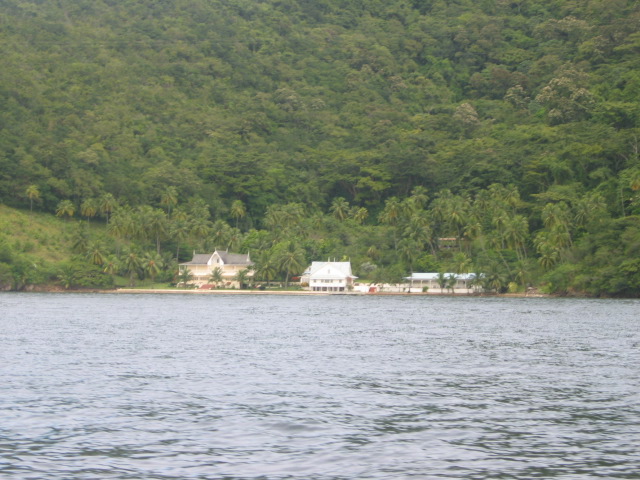
The holiday homes themselves are generally ridiculously pretty architectural confections in pseudo-colonial style. These days they usually come with central airconditioning and satellite television too, however, leading one to speculate as to what exactly it is people get away from.
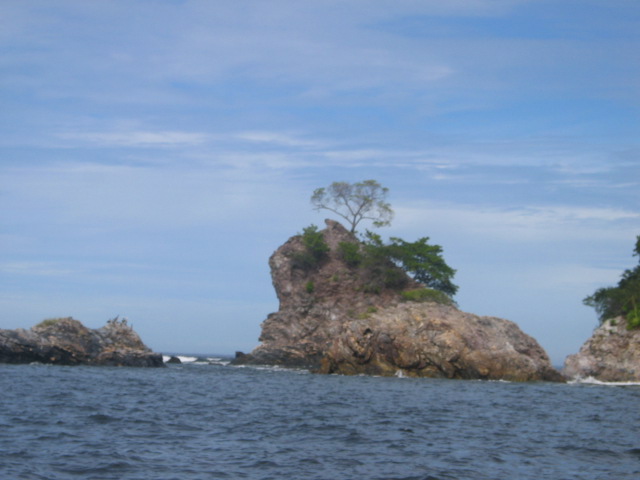
We now head further out from the mainland, to the final gap between Trinidad and Venezuela known as the "gran boca", or big mouth -- another one of Columbus' less-than-original names. These islands are very dry and desertlike, in contrast to the vegetation nearly everywhere else in Trinidad.
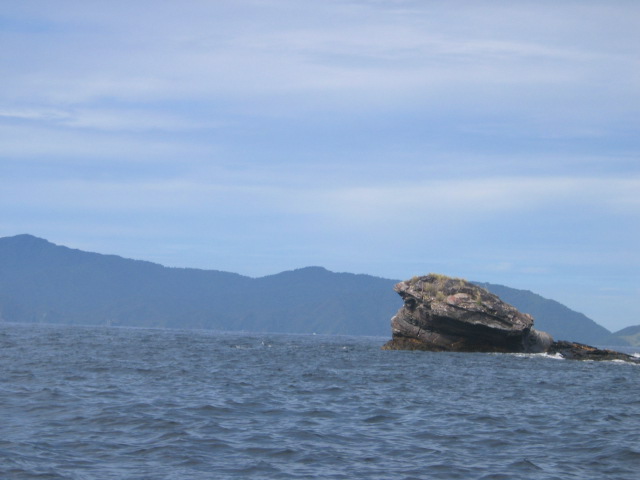
This is off the same point, angled a bit better. The big blue landmass is Venezuela, and still the closest I've ever gotten to the South American continent.
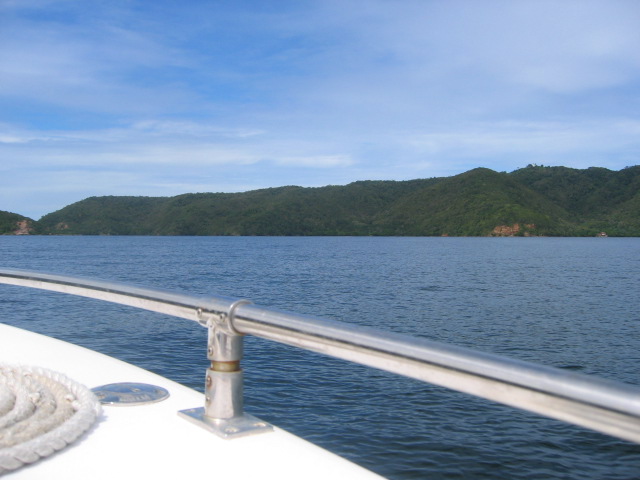
The island we stopped at has the delightful name of Chacachacare (cha-ka-cha-KAR-ee), which is an Amerindian name. There aren't a lot of places known by their original names in Trinidad because the colonists were, in general, arrogant bastards who preferred to call things Plymouth and Speyside and California rather than come up with new names.
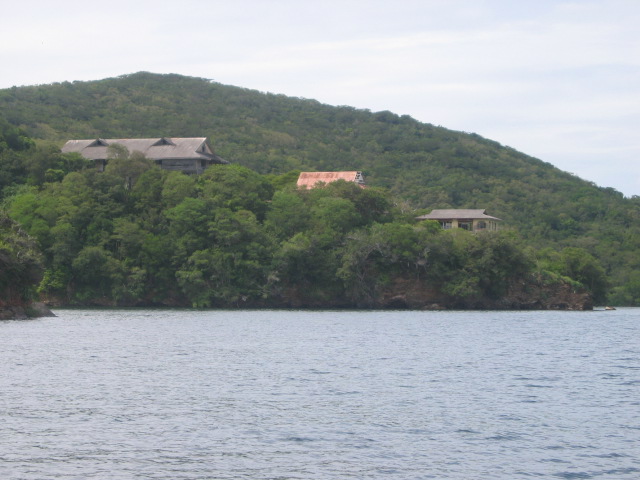
Chacachacare was until the 1970s a colony for people with Hansen's disease, formerly known as leprosy. It was run by nuns who lived on one side of the bay, and the patients who lived on the other, a very similar arrangement to the leper's clinic in The Motorcycle Diaries if you've seen that. These three buildings were the main part of the convent, now almost completely swallowed by forest.
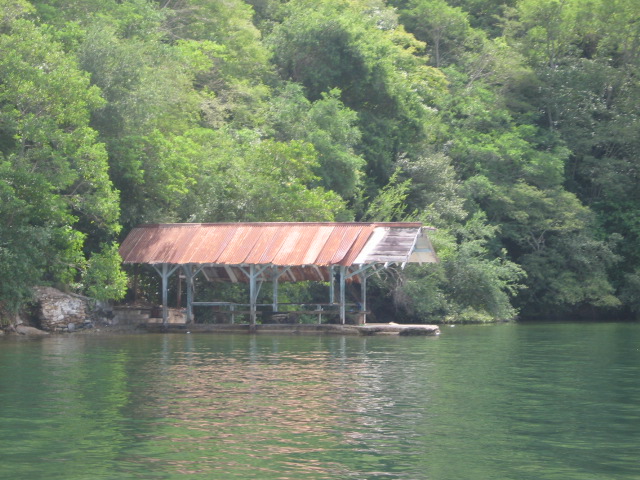
This is the surviving jetty for the convent. It would originally have been a bit higher out of the water, but sea levels have risen since the 1950s (when it would have been built) thanks to global warming. There are signs of rising sea levels all over the islands in the form of rapid erosion.
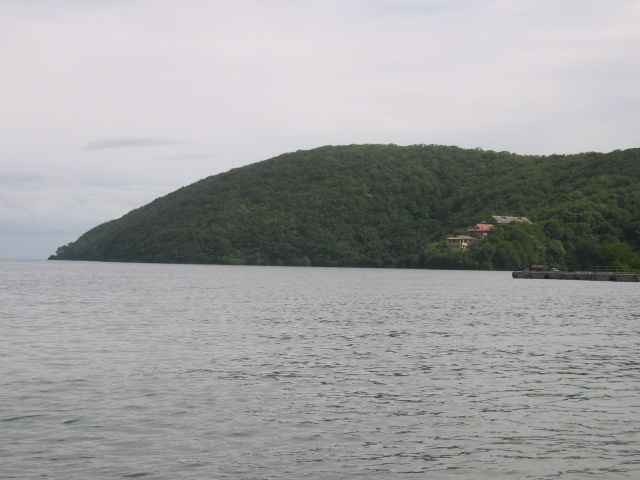
A distance shot of the engulfed convent buildings. Not a great shot.
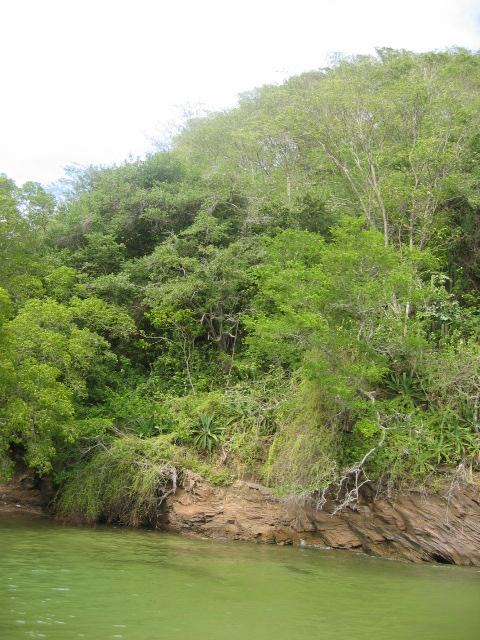
The bay where we stopped to swim. This is the colour of the water in Trinidad: instead of the aquamarine blue of the other islands, a ridiculously vivid green. Colour levels were not altered at all in this photo: it really is that garishly green.

Round the back of the islands are some really spectacular shale cliffs, rising several hundred feet into the air from deep water. However, cliffs are apparently difficult photographic subjects from small boats at their bases, so this is the best of the ones I took. They're really awe-inspiring in person though.
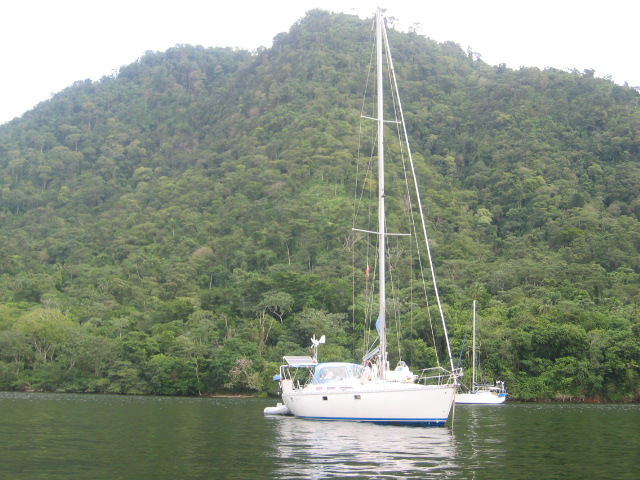
This is another bay we visted, known as Scotland bay. It's very quiet and favoured as a place to moor and sleep by visiting yachties, i.e. middle-class foreigners who travel the world in small sailing boats like this one, which would have crossed the Atlantic by itself.
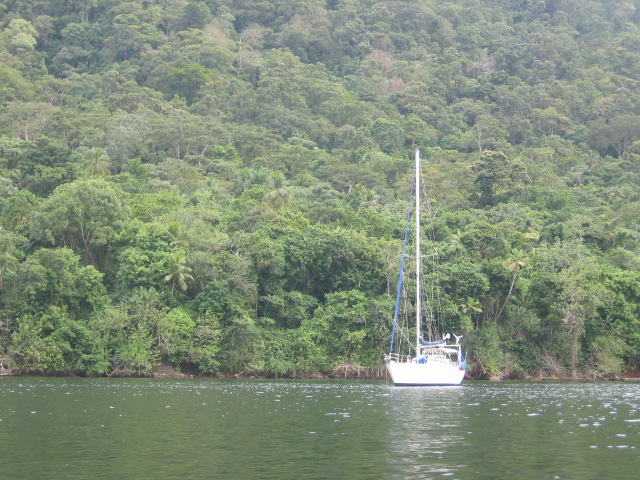
I was paying attention to all you people who told me to frame my shots better and choose a subject.
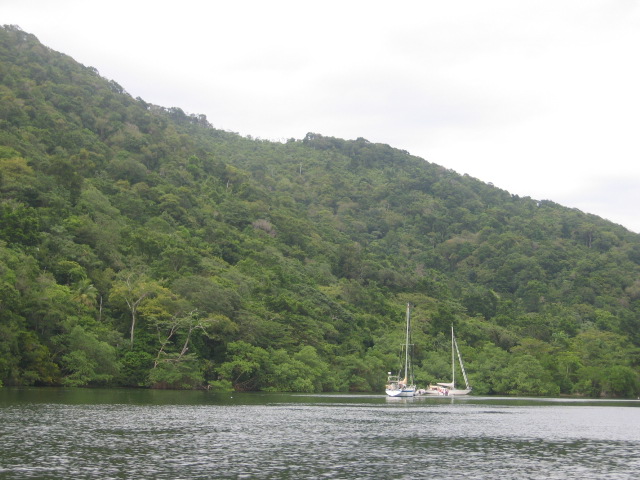
Is this any better?
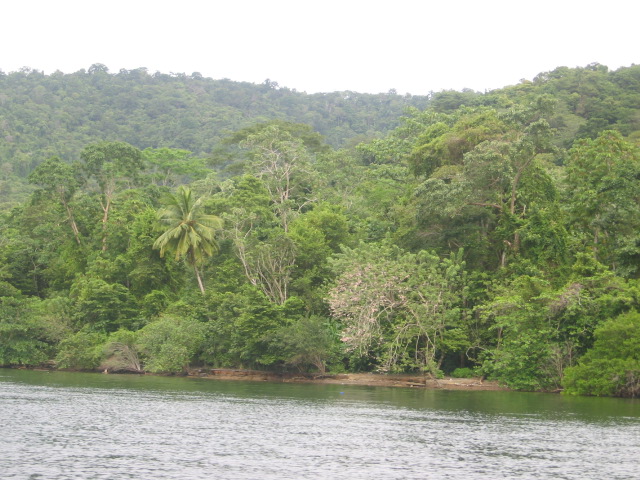
Eventually I gave up because the vegetation was just too pretty. Feel free to tune out.
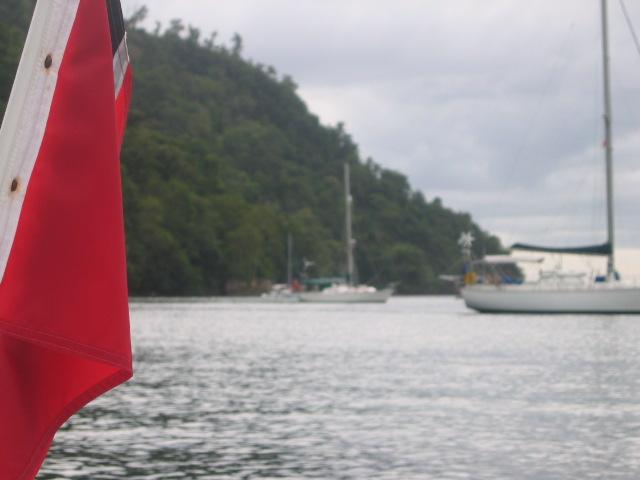
Trying to be a little bit arty.
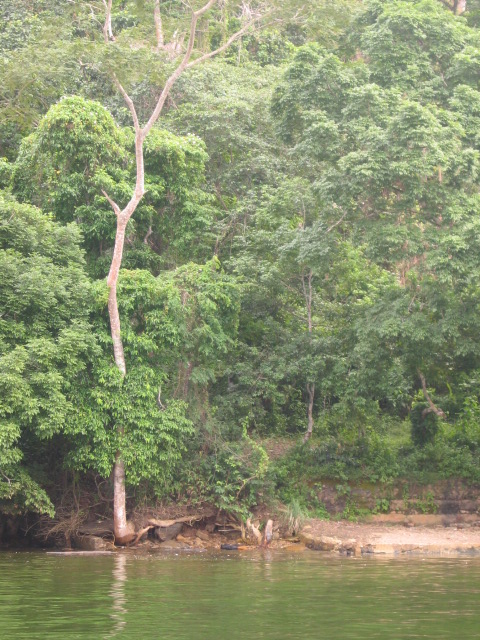
More pretty green stuff. Maybe you had to be there?
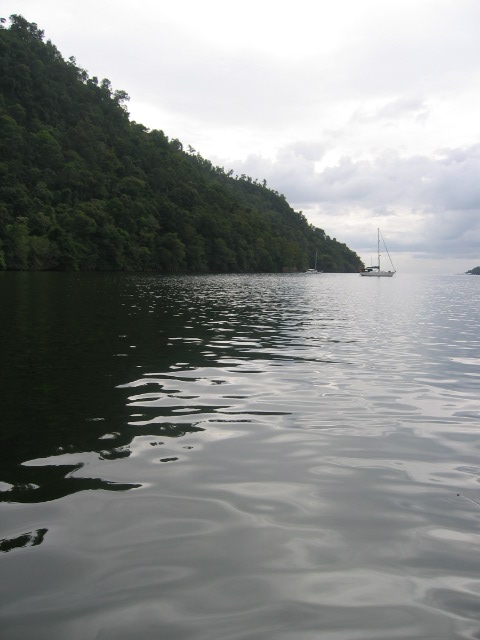
Basically, these places are really peaceful and beautiful and -- usually -- drenched in bright sunshine. Today was rather overcast, although it did make for better photos.
I did also take pictures of people, but I decided to exclude them for privacy and, anyway, you don't know them -- they're just my family.
But there's some more pretty island paradise for you.
